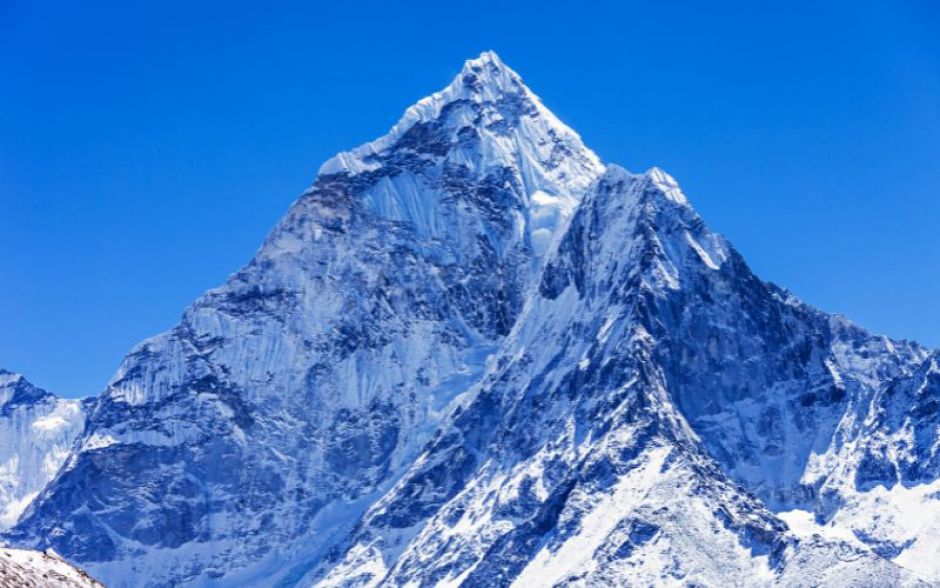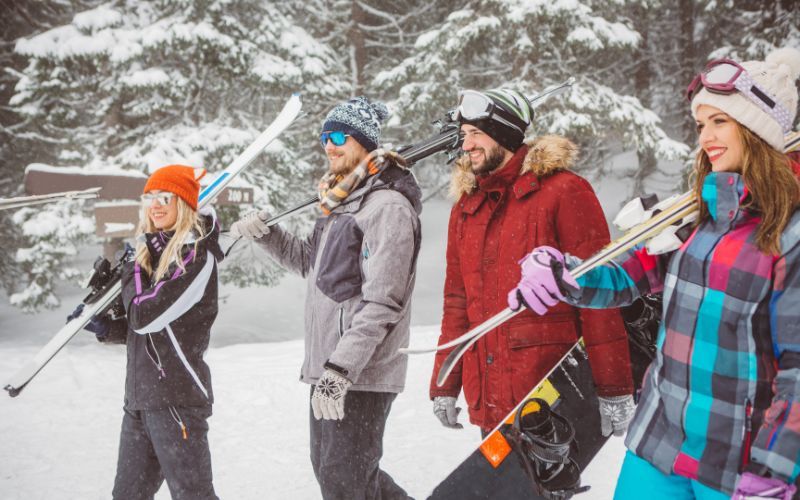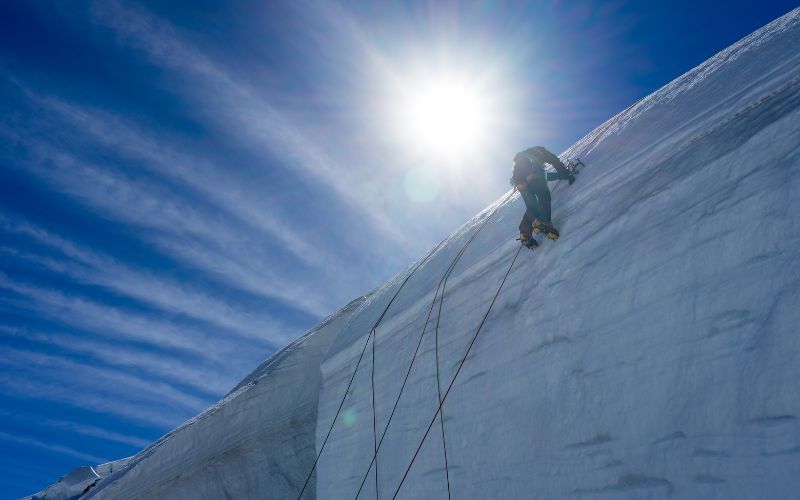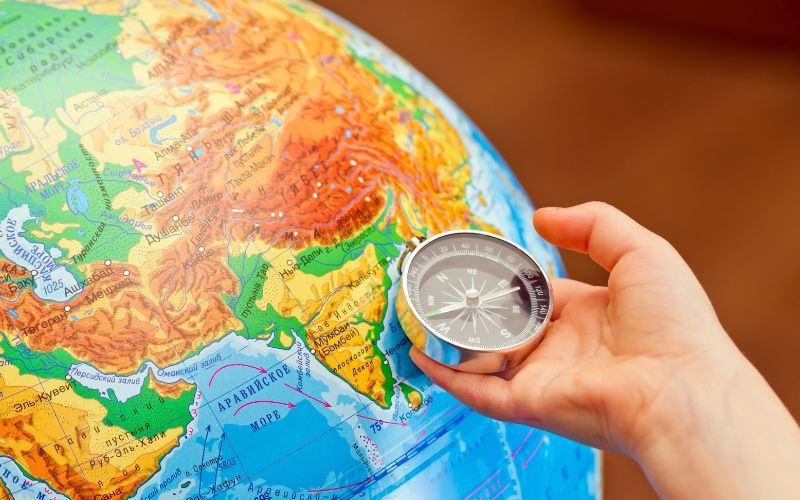
The Art of Trekking: A Super Guide to Wilderness Adventure 2023
The Art of Trekking – Trekking, a harmonious blend of exploration, physical exertion, and immersion in the natural world, is a pursuit that beckons adventurers to remote landscapes. This comprehensive guide to the art of trekking is your gateway to understanding the essence of this outdoor endeavor. Whether you’re a seasoned trekker or someone contemplating your first wilderness adventure, this article will unravel the secrets of successful trekking, from preparation and gear selection to trail exploration and safety considerations.

Table of Contents – The Art of Trekking
Introduction – The Art of Trekking
The Art of Trekking: Embracing the Wilderness
Trekking, often referred to as hiking in some regions, is more than a mere activity; it’s an art form. It’s an art form that allows individuals to step away from the hustle and bustle of urban life and immerse themselves in the untamed beauty of the natural world. It’s a journey of self-discovery, a physical and mental challenge, and an opportunity to forge a deep connection with the earth.
In the pages that follow, we will delve into the world of trekking, unraveling its intricacies and exploring its multifaceted dimensions. From understanding the fundamental principles to mastering the art of packing, from choosing the right trail to practicing responsible wilderness ethics – this guide is your compass on the path to becoming a seasoned trekker.
Trekking, for many, is a lifelong pursuit, a passion that ignites the spirit of adventure. It’s about venturing into the unknown, conquering mountains, traversing forests, and crossing deserts. It’s about witnessing landscapes that few have seen and experiencing a sense of awe that only nature can provide.

The Art of Trekking: Fundamentals and Essentials
Understanding the Essence of Trekking – The Art of Trekking
Before embarking on a trekking adventure, it’s essential to grasp the core principles that define this art:
- Self-Reliance: Trekking demands self-reliance, as trekkers carry everything they need on their backs. It’s a lesson in minimalism and adaptability.
- Exploration: Trekking is a form of exploration. It’s about venturing into wilderness areas that are often untouched by modern civilization.
- Physical Challenge: Trekking can be physically demanding. It tests one’s endurance, strength, and stamina, offering an opportunity for personal growth.
- Connection with Nature: One of the primary reasons people trek is to connect with nature. Trekking provides a rare chance to witness the natural world up close and personal.
- Mental Resilience: Trekking challenges the mind. It teaches patience, resilience, and problem-solving, as trekkers navigate through various terrains and conditions.
Types of Trekking Adventures – The Art of Trekking
Trekking comes in a variety of forms, each offering a unique experience. Here are some of the primary types of trekking adventures:
Day Trekking – The Art of Trekking
Day trekking involves exploring trails and returning to the starting point on the same day. It’s an excellent introduction to trekking and can be enjoyed by people of all fitness levels.
Multi-Day Trekking – The Art of Trekking
Multi-day trekking involves spending several days in the wilderness, often camping along the way. It allows trekkers to explore more remote areas and offers a deeper connection with nature.
Thru-Trekking – The Art of Trekking
Thru-trekking is the pinnacle of long-distance trekking. It involves completing an entire long-distance trail, such as the Appalachian Trail or the Pacific Crest Trail. These treks can span hundreds or even thousands of miles and require months to complete.
High-Altitude Trekking – The Art of Trekking
High-altitude trekking takes place in mountainous regions, often involving ascents to high passes or peaks. It requires acclimatization to cope with reduced oxygen levels at altitude.
Jungle Trekking – The Art of Trekking
Jungle trekking takes trekkers into lush and dense forests, where they navigate through vegetation, encounter unique wildlife, and experience the vibrant ecosystem of the jungle.
Desert Trekking – The Art of Trekking
Desert trekking explores arid landscapes, offering the challenge of traversing sand dunes, rocky terrain, and extreme temperatures.
Winter Trekking – The Art of Trekking
Winter trekking involves hiking in cold and snowy conditions. Trekkers must be prepared for sub-zero temperatures and snow-covered trails.
Selecting the Right Trekking Gear – The Art of Trekking
One of the most critical aspects of trekking is having the right gear. The choice of equipment can significantly impact your comfort and safety on the trail. Here’s a breakdown of essential trekking gear:

- Trekking Boots: Invest in high-quality, waterproof trekking boots that provide ankle support and traction.
- Clothing: Dress in moisture-wicking, layered clothing to regulate body temperature. Include a waterproof and breathable outer layer.
- Backpack: Choose a comfortable and durable backpack that can carry all your gear. Consider the size based on the duration of your trek.
- Navigation Tools: Carry a map, compass, and/or GPS device to navigate the trail effectively. Familiarize yourself with the route before setting out.
- Shelter: Depending on your trek, carry suitable shelter options, such as a tent, bivy sack, or tarp.
- Sleeping Gear: Invest in a lightweight and warm sleeping bag and a sleeping pad for insulation and comfort.
- Cooking Equipment: Pack a compact camp stove, cookware, and utensils for preparing meals on the trail.
- Food and Nutrition: Plan your meals and carry lightweight, high-energy foods that are easy to prepare.
- Water and Filtration: Stay hydrated by carrying an adequate supply of water or a water filtration system for purifying natural water sources.
- First Aid Kit: A comprehensive first aid kit should include items for treating minor injuries, blisters, and common ailments.
- Safety Equipment: Equip yourself with essential safety gear, such as a headlamp, whistle, fire-starting tools, and a multi-tool.
- Trekking Poles: Trekking poles provide stability, especially on uneven terrain and steep ascents and descents.
- Insect Repellent and Sun Protection: Protect yourself from insects and the sun’s harmful rays with appropriate repellents and sunscreen.
- Leave No Trace Essentials: Adhere to Leave No Trace principles by carrying out all waste, minimizing impact, and respecting nature.
Trekking Preparation and Planning – The Art of Trekking

Before embarking on a trek, thorough preparation and planning are vital for a safe and enjoyable experience. Here’s a checklist for your pre-trek preparations:
- Research: Gather information about your chosen trail, including its difficulty, distance, elevation gain, and any potential hazards. Read trip reports and reviews from other trekkers.
- Weather Forecast: Check the weather forecast for the day of your trek and the surrounding days. Be prepared for changing weather conditions.
- Trail Permits: Determine if you need permits or passes to access the trail or park, and obtain them in advance.
- Trail Maps and Navigation: Obtain trail maps and study the route. Familiarize yourself with landmarks and trail markers.
- Trekking Partners: Decide whether you’ll trek solo or with a group. Inform someone of your trekking plans, including your expected return time.
- Fitness and Training: Assess your physical fitness level and choose a trek that matches your abilities. Train and condition your body accordingly.
- Emergency Plan: Develop an emergency plan that includes contact information, emergency contacts, and actions to take in case of an accident or unexpected circumstances.
- Timing: Start your trek early in the day to allow ample daylight hours for your journey. Avoid late starts that may lead to trekking in the dark.
Trekking Trails: Exploring the Wilderness – The Art of Trekking

Types of Trekking Trails – The Art of Trekking
Trekking trails vary in length, difficulty, and surroundings, offering options for all trekkers. Here are common types of trekking trails:
Nature Trails
Nature trails are typically short, easy treks designed for leisurely strolls. They often feature interpretive signs or guided information to educate trekkers about local flora and fauna.
Day Treks
Day treks vary in length and difficulty but are intended to be completed within a single day. They are suitable for trekkers of all levels and provide opportunities to explore diverse landscapes.
Multi-Day Treks
Multi-day treks are designed for backpacking and camping. Trekkers can cover longer distances and spend one or more nights in the wilderness.
Thru-Treks
Thru-treks are extended journeys that require trekkers to complete an entire long-distance trail, which can take weeks or months. These treks offer a profound connection with nature.
Loop Trails
Loop trails start and end at the same point, forming a complete circuit. They provide a sense of accomplishment by returning trekkers to their starting location.
Point-to-Point Trails
Point-to-point trails require transportation at both ends, as trekkers start at one trailhead and finish at another. They offer the opportunity to explore a new section of terrain.
Popular Trekking Destinations
The world boasts a wealth of breathtaking trekking destinations, each with its unique appeal. Here are a few renowned trekking locations:
- Himalayan Treks: Explore the Himalayan trails in Nepal, with routes that lead to Everest Base Camp, Annapurna Circuit, and more.
- Inca Trail: In Peru, the Inca Trail leads trekkers to the ancient ruins of Machu Picchu, offering a blend of history and natural beauty.
- Tour du Mont Blanc: Circumnavigate the Mont Blanc massif, passing through France, Italy, and Switzerland, on this iconic European trek.
- Torres del Paine Circuit: In Chilean Patagonia, this circuit takes trekkers through some of the world’s most spectacular scenery, including glaciers, lakes, and rugged mountains.
- Appalachian Trail: Stretching over 2,000 miles across the eastern United States, the Appalachian Trail offers diverse landscapes and a challenging thru-trek.
- Pacific Crest Trail: This 2,650-mile trail runs from Mexico to Canada, traversing the stunning landscapes of the western United States.
Safety and Etiquette: Trekking Responsibly
Trekking Safety
Safety is paramount when trekking. Follow these safety guidelines to ensure a secure and enjoyable trekking experience:
- Stay Informed: Stay updated on trail conditions, weather forecasts, and any potential hazards. Be prepared to turn back if conditions worsen.
- Trek Within Your Limits: Choose treks that match your fitness level and experience. Overestimating your abilities can lead to accidents.
- Hydrate and Fuel: Drink water regularly to stay hydrated and consume snacks to maintain energy levels. Avoid trekking on an empty stomach.
- Stay on the Trail: Stick to designated trails and avoid shortcuts to protect fragile ecosystems and minimize impact.
- Share Your Plans: Inform someone you trust of your trekking plans, including your intended route, estimated return time, and emergency contacts.
- Carry Essential Gear: Carry appropriate gear, including navigation tools, first aid supplies, and extra clothing layers.
- Leave No Trace: Adhere to Leave No Trace principles, which include packing out all trash, respecting wildlife, and minimizing campfire impact.
- Wildlife Encounters: Keep a safe distance from wildlife and refrain from feeding them. Familiarize yourself with specific wildlife safety guidelines for your area.
Trekking Etiquette
Responsible trekking includes adhering to proper trail etiquette to ensure a positive experience for all trekkers:
- Yield the Trail: Uphill trekkers typically have the right of way. Step aside to allow them to pass easily.
- Maintain Quiet: Keep noise levels to a minimum to preserve the tranquility of nature and respect other trekkers.
- Pack Out Trash: Leave no litter behind. Pack out all trash, including food scraps and used tissues.
- Control Pets: If you trek with pets, keep them on a leash and clean up after them. Ensure their presence does not disturb wildlife or other trekkers.
- Respect Wildlife: Observe wildlife from a distance without approaching or feeding them. Do not disturb their natural behavior.
- Campfire Safety: Follow established campfire regulations. Use camp stoves for cooking instead of making fires.
The Rewards of Trekking: Health and Well-Being
Physical Health Benefits
Trekking offers a myriad of physical health benefits, including:
- Cardiovascular Fitness: Trekking engages the cardiovascular system, improving heart health and circulation.
- Strength and Endurance: Uphill climbs and rugged terrain build muscle strength and endurance.
- Weight Management: Regular trekking can contribute to weight management and help with calorie burn.
- Balance and Coordination: Uneven terrain enhances balance and coordination.
- Lower Stress Levels: Spending time in nature and engaging in physical activity reduces stress.
- Enhanced Respiratory Health: Trekking in fresh, outdoor air benefits respiratory health.
Mental and Emotional Well-Being
Trekking also has a positive impact on mental and emotional well-being:
- Stress Reduction: Nature immersion and physical activity reduce stress and promote relaxation.
- Improved Mood: Trekking releases endorphins, boosting mood and reducing symptoms of depression.
- Enhanced Cognitive Function: Time spent in nature enhances cognitive function, creativity, and problem-solving skills.
- Connection with Nature: Trekking fosters a sense of connectedness with the natural world, leading to improved overall well-being.
Conclusion
In the grand tapestry of outdoor pursuits, trekking stands as a masterpiece, blending the wonders of the natural world with the indomitable spirit of adventure. It is more than a mere pastime; it is the embodiment of exploration, a journey that unravels the secrets of the wilderness and the human soul.
As we reach the end of this comprehensive guide to the art of trekking, it becomes evident that trekking is not just an activity; it’s an art form that captures the essence of our connection with nature. It’s an art form that challenges the body and mind, fosters resilience, and instills a sense of awe in the face of the untamed.
Trekking offers a multitude of rewards. It grants access to landscapes that remain untouched by modernity, allowing us to tread on paths forged by countless generations before us. It grants solace to those in search of solitude and camaraderie to those who venture in the company of like-minded souls. It grants moments of clarity beneath starlit skies and moments of triumph atop mountain peaks.
To embark on a successful trekking journey, remember the lessons we’ve explored in this guide: meticulous preparation, careful planning, a respect for safety, and a commitment to environmental stewardship. Equipped with these principles and the right gear, you’ll be ready to embrace the wild with confidence.
As you stand at the trailhead, ready to step into the unknown, remember that trekking is an invitation—an invitation to discover the world, to know yourself, and to be humbled by the vastness of nature. It’s an invitation to connect with the earth beneath your feet and the sky above your head, to hear the whispers of the wind and the stories of the forests. It’s an invitation to embark on a timeless adventure that promises unforgettable moments and a deeper appreciation for the wonders of our planet.
So, when you think of the art of trekking, remember that it’s more than a hobby; it’s a lifelong pursuit of awe, discovery, and self-realization. With every step you take on the trail, you’re not just exploring the wilderness—you’re exploring the boundaries of your own potential.
With a heart full of wonder and a spirit of adventure, you are now prepared to answer the call of the wild. Happy trekking!
You might also like:
Popular Stories
Newsletter
About me
Meet Dennis, an enthusiast of the great outdoors. For the past 15 years, he’s maintained a daily routine that includes running, hiking, and hitting the gym, embodying a commitment to an active and healthy lifestyle.
Dennis is a true advocate for the joy and rejuvenation that outdoor living can bring.



